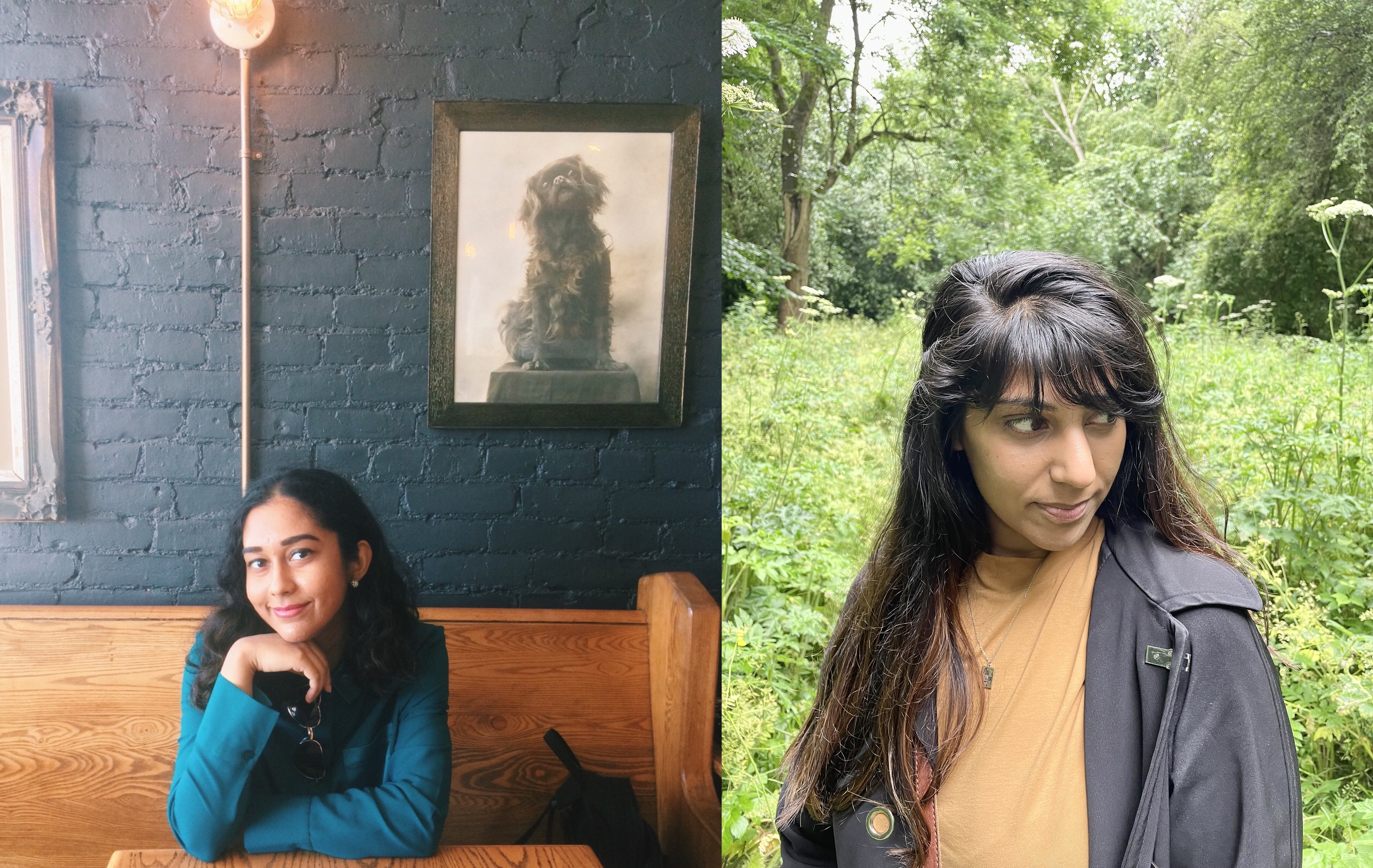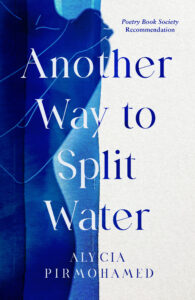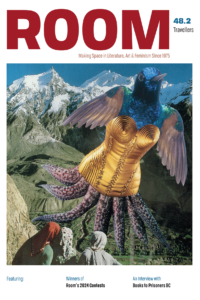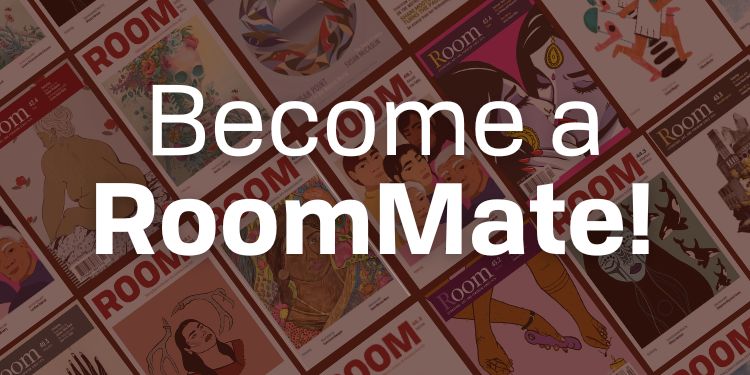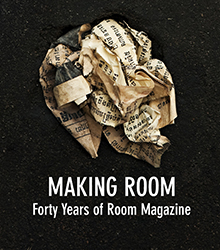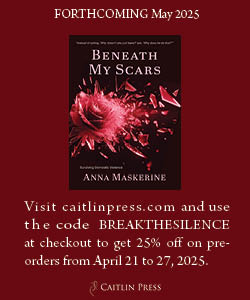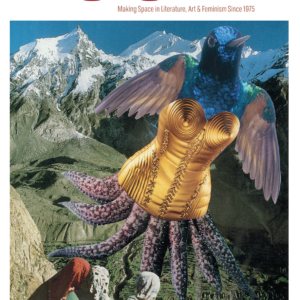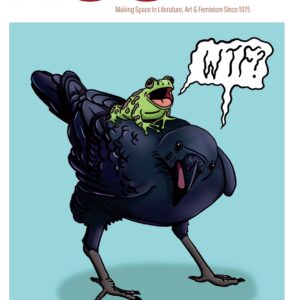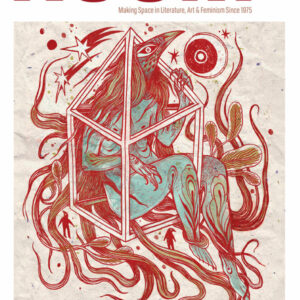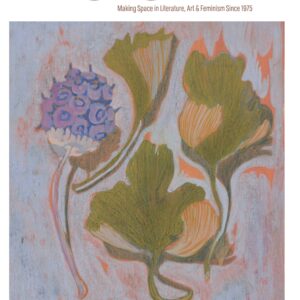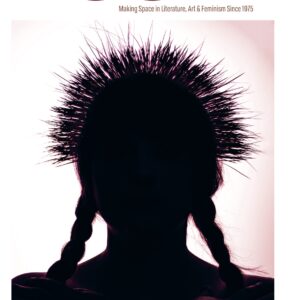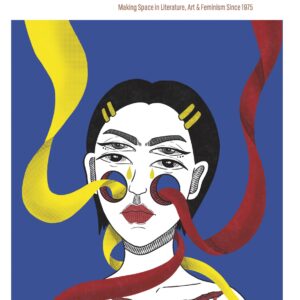Alycia Pirmohamed’s debut collection, Another Way to Split Water, is an homage to family, the natural world, and storytelling. To celebrate her launch (now out in Canada, the US, and the UK!) here’s an interview where she chats with Rebecca Mangra about her collection, writing, and more.
PS—keep reading to find a link to a lyric essay Alycia published with ROOM in 2020!
_______________
ROOM: I thought I’d start at the beginning and talk about place (your book is a work of nature writing after all!). You were born in Edmonton and have since travelled all over the world, and you now reside in Edinburgh, Scotland. In the collection, there’s a strong sense of what a country or a nation can be—at times welcoming, but also at times very isolating. I feel like you were balancing the two sides of a coin. In “You Know It but It Don’t Know You,” you write: “when does a country become a window?” Could you speak more about how borders and regions function in the collection, especially your home province of Alberta that features prominently?
ALYCIA PIRMOHAMED: I appreciate your framing of that question, like calling my book one about place and nature. I always appreciate it when people pull those threads through. I guess one thing that I try to do in my poetry, specifically, is think about the ways in which figuration, metaphor, and language itself represent multiplicity. Or how to embody many places at once, or think about what it means to be from many places at once. I think poetry is so beautifully poised to be able to straddle multiplicity because, for example, you can bring different landscapes together within a single poem—through things like metaphor and repetition and echoes. In my work, I think the natural world is often used as a way to represent the “self” and the way self moves across different places and different landscapes and different borders.
In “My Body is a Forest,” I used the figure of the deer to sort of think about what it means to be from or move through many places at once, and to pass through or beyond borders. And those are physical borders, but also the borders of time. [I] want to sort of acknowledge the multiple histories or places that one belongs to or might sometimes feel isolated from like you said.
ROOM: I think that’s very interesting—the idea of poetry being a great vehicle to explore multiplicity and all the places that we can be in at once. How would you describe nature writing and writing about the land? I feel like nature writing is one of those genres that can sometimes be misunderstood. People hear nature writing and they’ll think of a beautiful maiden writing poems by the riverbank. But it’s a lot more complicated and heavier than that—it traverses a lot of really important topics like the self, as you said, and also memory, climate change—there are so many ways to utilize nature writing. How do you define the genre? What is nature writing to you?
AP: The reason why I loved that you approached my collection with that in mind, with it being [in the tradition of] place writing or nature writing, is because often nature writing as a genre has felt closed off to me. I’ve been publishing work since 2016 and over time, I’ve become aware of how my work has been perceived and categorized by the industry. In an interview, Kazim Ali writes that “genre is a reading practice.” His work is fluid and encompasses many genres. I think as soon as you start publishing your work, it falls under a certain gaze or is under a certain kind of framework or slotted into particular narratives, and that’s all part of the reading practice. That’s part of what editors and publishers in the market do, and I feel like with my work, it was very easy to see how it was being placed within narratives of migration and identity, which it is absolutely about, but rarely in these other genres like nature writing, which is typically or canonically white and male-dominated. In actuality, I think all those aspects are important to, and intertwined in, my work.
I’m also quite interested in questions like what does it mean to be a particular body in a particular landscape? So as a woman, first of all, what does it mean to navigate landscape and be in the natural world? Is it safe? Is it welcoming? And then also, to be a brown woman, how, then, am I perceived in the natural world? How does that context change when I reveal that I lived in rural Alberta during my formative childhood years? It’s so important to me, in my view of nature writing, to think about our particularities and contexts and backgrounds, and how all of that is informing the work, how it is informing the lyric “I” that is present in the work.
ROOM: The collection also talks about faith quite a bit, Islam specifically, and it’s interesting because I feel like your speakers are reverent of God, but still a bit unsure about what His place in their life is. So I’m wondering, if you’re comfortable disclosing, what is your relationship with Islam today and what was it like using poetry as a vehicle to explore that relationship?
AP: That’s a great question. I grew up a practicing Muslim. My parents, particularly my father, are very devout Muslims. It has always been a part of my life. At different points in my life, I’ve felt both close to and displaced from my religious context. Something that really affected my relationship with my faith was that I grew up in a really small town during 9/11 where my family was the only brown family; [I was] confronted with a lot of Islamophobia at that time. And I was young, I was a child, [so I ended up] not feeling connected to my faith because it felt dangerous to be visibly Muslim. And so that was when I started sort of trying to ignore that part of me and started distancing myself from my religion. I suppose it was internalized Islamophobia.
And so for a period of my adolescence, I felt really distant [from my faith], but it was a self-created distance. It wasn’t necessarily to do with my relationship with God. It was more to do with external factors, like misrecognition by others on what it meant to be Muslim. But as you noted in the collection, the speakers, these versions of myself, we are reverent of God, and prayer is part of the collection because prayer is still part of my life. I kind of write about how I have a very complicated relationship with my religion because I did cut myself off from my belief and my faith, and then when I found my way back to it, I still had questions. There are moments where I don’t feel as connected to my roots or to my religion. And then there are moments where I feel like I rely on ritual and prayer for solace and peace. That’s my relationship with Islam and that’s what the collection is portraying—the speakers are grappling with that too. It’s complicated.
There’s a poem titled “Hinge” in the collection where I write about what prayer does and doesn’t sort of feel like for me and what it feels like to have belief and what it feels like to lose belief: all of those things are colliding in that poem. Sometimes, I actually feel guilty when I read that poem and then other times, I feel quite liberated. The way I feel about my faith is constantly changing. It’s just very dynamic and I constantly have questions and I never find answers I guess.
ROOM: “Hinge” is one of my favourite poems in the collection. As a young Muslim, I also feel that sense of grappling with the way I see Islam and the way that others see it and how those two things are always refracting off of each other. I think a lot of other readers will also really relate to that balance act because we’re living in an age where being a young person, or any person really, is just so difficult in so many ways: we’re being affected by social media, the internet, pandemics of various kinds, and it’s so hard to live spiritually in one place or follow one set of rules. A lot of us look to faith as one of those avenues to find harmony or solutions, but as you said, it’s a complicated relationship. So thank you for writing about that—I saw myself in your words.
AP: Thanks for saying that. I think it’s important that there are more and more voices constantly being acknowledged who write about their faith. [Religion], and how we practice our faith, is different for everybody. I also feel like when I read a collection written by another Muslim woman, I always find a sense of home there as well because poetry can build a sense of community in that way, too.
ROOM: I also wanted to talk about style and the experimentation in your collection. There’s a lot of experimentation with space, gaps, and punctuation. There are definitely collections out there with just as much experimentation that I just haven’t read, but I found that in your work, it was really refreshing to see you play with spaces, brackets, strikethroughs, and other punctuation marks. Are those things that you instinctively included when you were originally writing these poems or did those come out in later drafts? What was the process of working with non-textual elements/working outside the text? Or there can be a strong argument that those marks and stylistic elements are very much a part of the text.
AP: For those poems that tend to use gaps and indentation, I feel like a lot of those moments did come to me a little more intuitively. I like to play around with the content and revise my images, as well as tease out repetition and sound. But line breaks and other spatial elements of the page—those I feel are very intuitive. Speaking of gaps in particular, something in the making of those poems had called for that kind of space. And so whether that space is meant to represent some kind of silence or if that space is meant to represent something withheld or if it’s very much about sound and holding breath for a little bit longer—those things tended to exist in the first drafts. And I think it’s because the meaning of those poems relied on that space being there.
But there are other elements. One poem you mentioned, “You Know It but It Don’t Know You”—that poem was a response to a piece of artwork by Tako Taal [of the same name] and she was a resident artist at Edinburgh College of Art. I had the chance to meet up with her in her studio and talk about her art. This gave me the chance to think more deeply about how to sort of represent what she’s doing, or her visual work, through the written form. She’s a visual artist, so I think some of the experimentations that happened in that poem—there’s some gaps, some strikethroughs, then there’s some erasure almost, and lots of blank space—I think a lot of the experimental elements for that poem were part of my response to Tako’s work. I feel like collaboration pulls new things from you. It makes you approach the page in a different way. Because the poem is a collaboration of sorts, it belongs to me in some ways, but it also belongs to Tako. It’s her work that I’m responding to. Because of that, there had to be implicitly or inherently some sort of rupture in the way I normally write. So some experimentation had to occur because I was approaching the page and approaching the work in response to someone else’s work as well. Writing how I normally write didn’t feel like it was enough to encompass that collaborative element or to sort of pay homage.
ROOM: And is that [ekphrastic writing] something you’d like to do more of?
AP: Yeah, absolutely. I have been thinking about my next collection for a bit and I received a grant to work on it and the proposal is actually all about response work and all about collaborative work and intertextuality. All the poems that I’m currently interested in and writing are all interweaving different influences of mine together, paying homage to different, mostly South Asian women writers, and sort of playing with their work in an intertextual way. Some of it involves asking permission or collaborating, and then some of it is sort of responding to or writing poems after other authors.
One sequence is responding to Bhanu Kapil’s twelve questions from [her collection] The Vertical Interrogation of Strangers, which I did get permission from her [to do], so there’s this element of writing within a community space too because there’s this idea of reaching out to people and being like ‘I want to do this thing,’ and it involves more moving parts. But I’m so interested in writing more intertextual collaborative work. In 2020, I wrote a piece with Pratyusha, a lyric essay called “Second Memory” [published online with Room], so it’s something I’m really interested in, both in terms of experimenting with the line and experimenting with the page itself. Lately, I’m integrating my influences a bit more deliberately.
ROOM: Yeah, I think work across mediums is always so interesting because artists are kind of filling each other’s gaps, but also creating new gaps together.
AP: Yeah, and I think writing collaboratively just makes you perceive your own work in a totally different way. You know that editing trick people say, to read your work from the bottom up or to edit backwards? I feel like writing collaboratively is like a version of that where you end up approaching your own work as if it’s completely outside of you because it is—it’s actually almost this third person. It’s a collaborative, intertwined person or voice that’s coming together and sort of taking over the work.
ROOM: Speaking of the bottom up, my last question is referring to the title of your collection, which is Another Way to Split Water. In the collection, you’re splitting a lot more than water. You’re literally splitting words, but you’re also talking about the splitting of relationships, of people, of time, of memory, of the past, even things in nature. For you, what is it about the act of halving that is moving to you?
AP: Oh, I like the way you put that—that this action is moving to me, because it really is. When I put these poems together, certain things emerged, like certain themes and motifs. Part of deciding what the collection would grow into was figuring out which threads existed in the work. One of the most prominent motifs was water and I just realized in the process of putting together this manuscript that something about the water is really important to me and these poems. I came to realize that I was really interested in these ideas of doubleness and reflection and liminality. I felt like water was quite rich in terms of its metaphorical potential to sort of think about liminality: about floating and reflecting and facing oneself. But then also physically, it represented so much because my parents had to cross water to come to Canada, which is where I was born. There’s also the way water looks from an aerial view, how it kind of intersects land. There’s that sort of fragmentation of land in a visual way that’s quite intriguing to me. But then one thing that I find quite moving, like you said, is something I included in one of my epigraphs. Safia Elhillo writes: “i am from anywhere halved by water” and that for me—it just opened up this possibility of being from multiplicity because if you’re from anywhere halved by water, you’re never just from one place. You’re from a place of halves, of separations, of splitting, and that helped me shape my thoughts about wholeness—I’m now less interested in the idea of being “whole” and more interested in, and more in love with, these ideas of actually being from multiplicity. Ideas of porousness and fluidity and moving across rather than asking, what am I missing? What is split within me?
And so, I think writing this book became one way to sort of fall in love or start to love myself for the loose ends rather than always longing to be “whole,” whatever that means. I don’t even know what that is or if that exists for anybody. I don’t think it does.
ROOM: That’s really beautiful. It kind of reminds me of when I think about home. I keep moving around and Toronto is just becoming more and more unaffordable and the spirit of the city feels like it’s falling away to commercialization and greed. You know, so much of the heart of it is being peeled away, just like so many other cities around the world. I just keep thinking about home and asking, where is home? What is home? Is home a feeling you can take with you? It doesn’t feel that easy. Home is never a whole thing. It’s a lot of different things across different places, but there’s this need to point at it or know its location, so I keep trying to look for it. But I don’t think I’m going to find anything because of the reasons that you outlined.
AP: Yeah, I think we all have this kind of preoccupation of wanting home or wanting to know what that is, and for me, I was also quite interested in expanding that to homeland, like where is my homeland? And then I’m sort of realizing that it has to do almost with the people as much as the literal place itself. I found home and I found homeland in writing with, and thinking with, and speaking with, and being in space with other brown women—that for me feels like homeland, even if we’re in Edinburgh or in Canada or online. These kinds of conversations feel satisfying in a way that home can feel satisfying, like in the way that we might use the word “belonging.” I feel like I belong with these women, within these conversations, where I feel safe to talk about my identity or I feel safe to kind of talk about my wants and my desires and my ancestral history. And then also where I feel safe to talk about my day to day life. I think that’s quite important. I now think home and homeland exist in these more abstract spaces rather than being only physical places to belong to or to feel tethered by—like a country, like we talked about, or a nation.
ROOM: Which is a good thing!
AP: Absolutely!
ROOM: We’re finally expanding out towards what wants us back and where we feel accepted, which is nice.
AP: Yeah and deciding that for ourselves. I think that’s huge too, rather than the expectation or [relying on] the way people perceive us.
